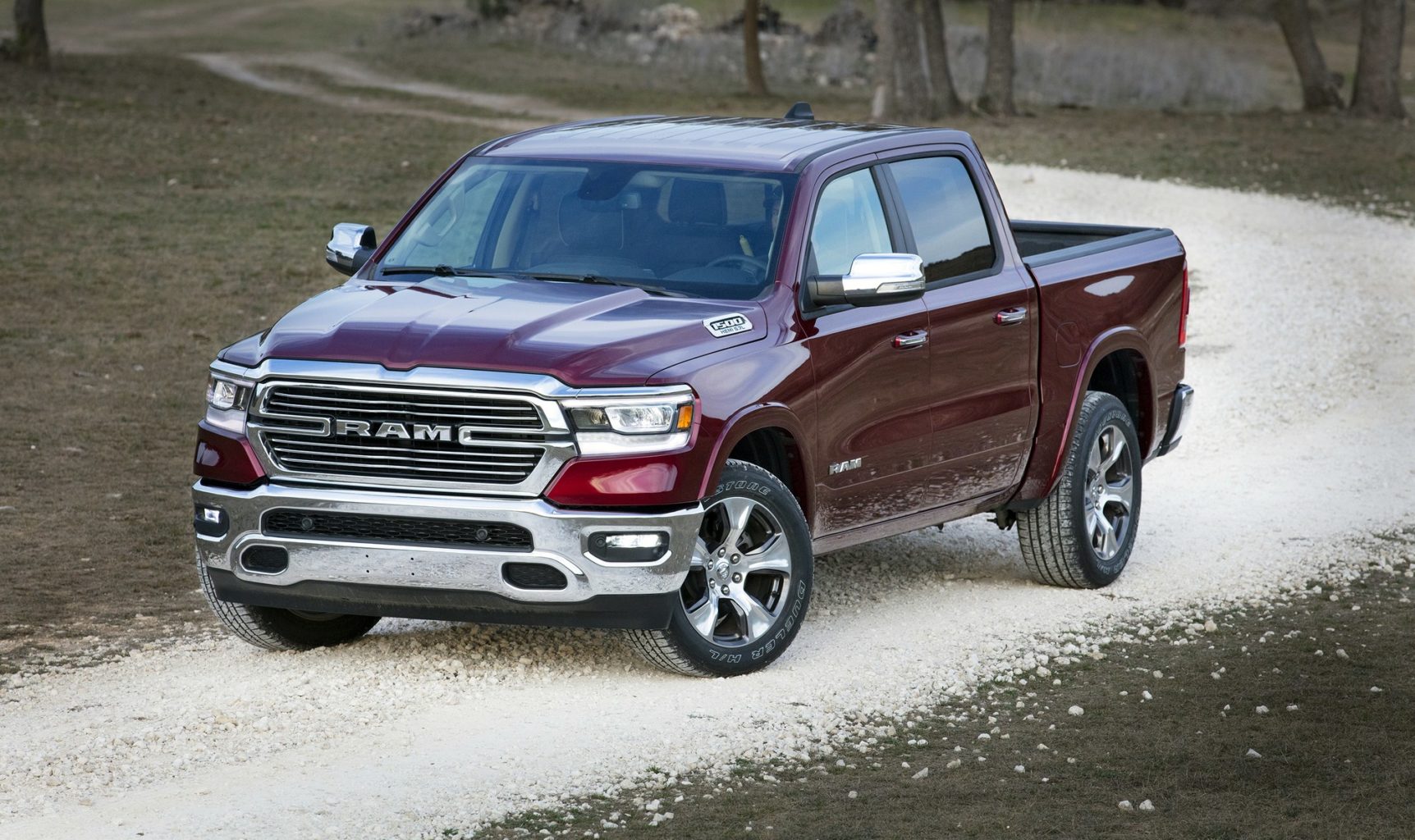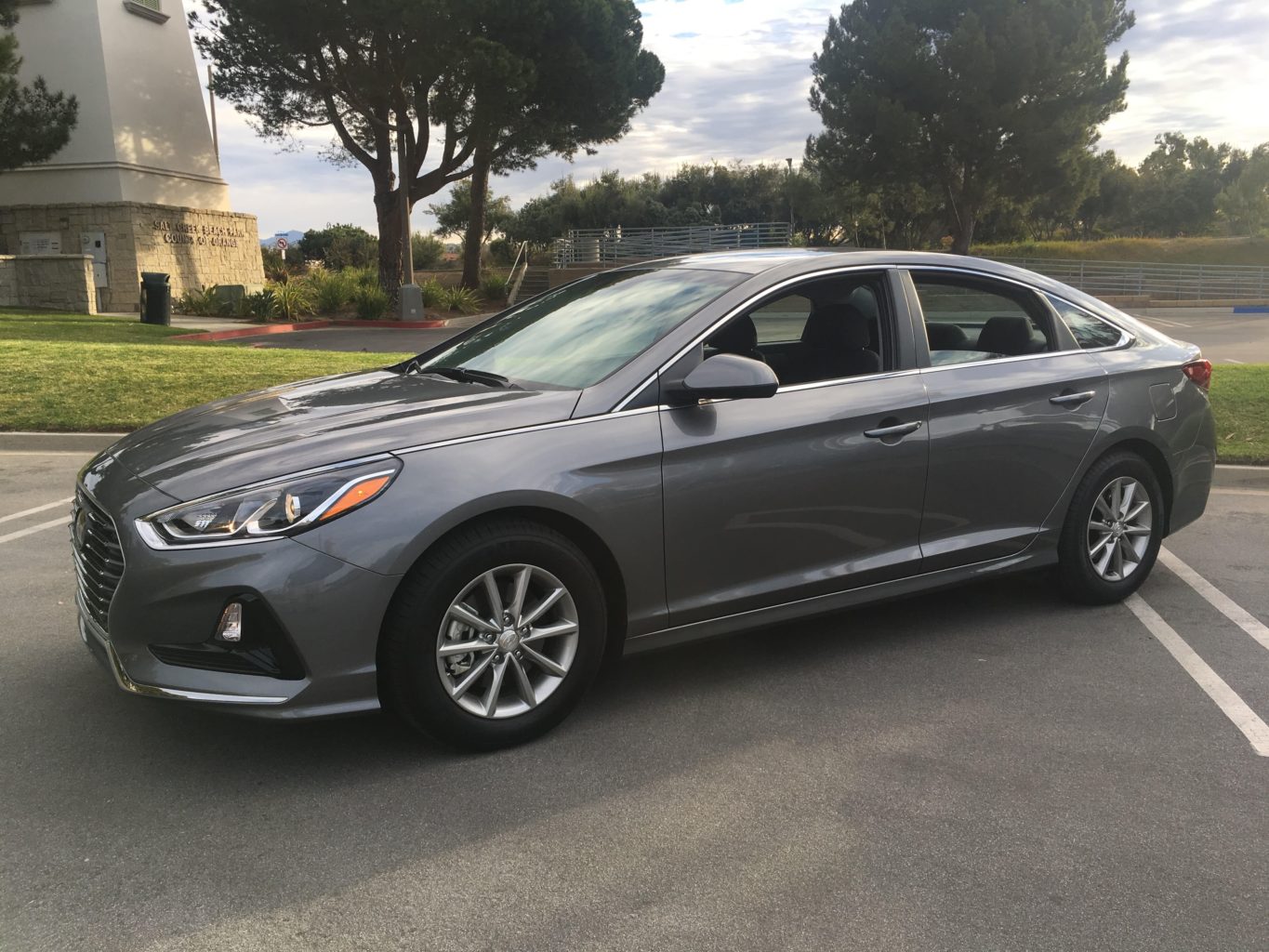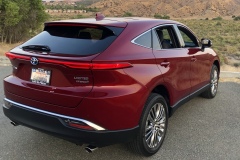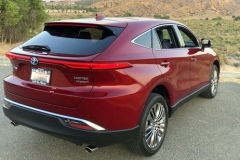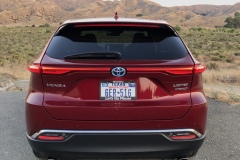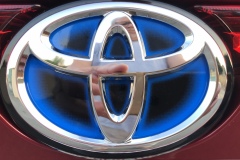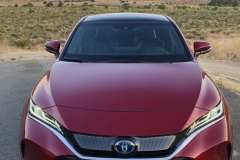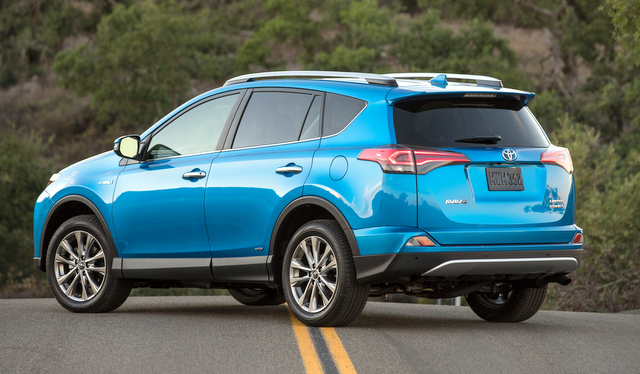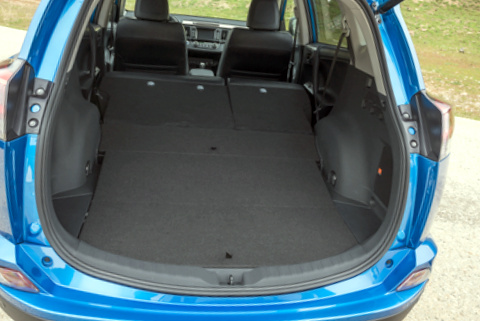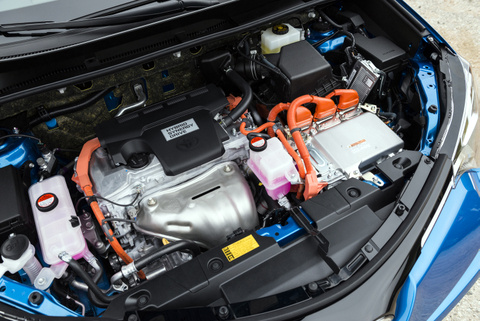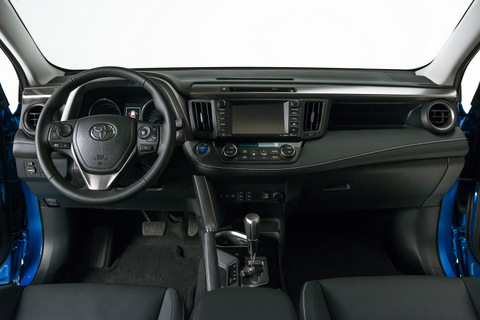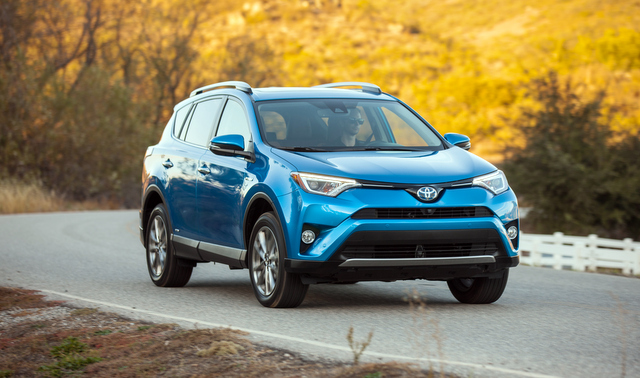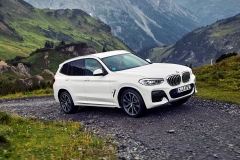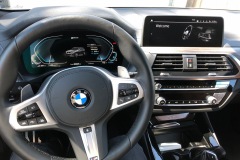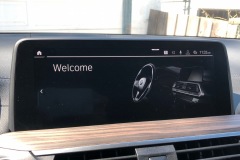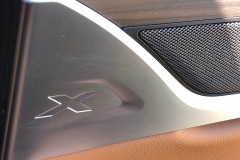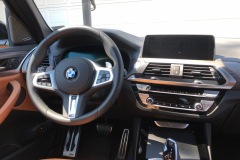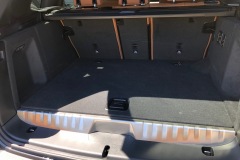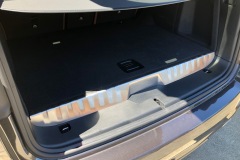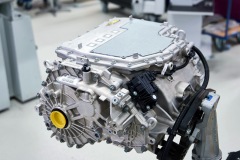Hyundai’s Value Midsize Sedan
With consumers attracted to SUVs and crossovers in growing numbers, the family sedan is slowly being surpassed as America’s favorite car of choice. Hyundai is having none of it. It offers the midsize Sonata sedan in seven trim levels (that’s gas only, not counting the more expensive, but also more efficient hybrid and plug-in hybrid models). The 2018 Hyundai Sonata Eco is the smart value choice; it makes a compelling case for why the sedan’s obituary is premature. Clean Fleet Report took a look at the 2018 Hyundai Sonata Eco, with an eye out for if the word “eco” meant dollar savings or fuel savings. Turns out it is a bit of both.
Drivetrain and Performance
The Sonata Eco is powered by a 1.6-liter turbocharged four-cylinder engine, producing 178 horsepower and 195 pounds-feet of torque. For the “eco,” as in “economical” tag to be realized, Hyundai chose to drive the front wheels with a seven-speed EcoShift DCT (dual-clutch) automatic transmission. The engine was smooth and the transmission seamless, both in-town and in freeway driving. There are three driver-selectable drive modes of Eco, Comfort and Sport. These are fairly self-explanatory with Eco producing the best fuel economy, Sport altering the transmission shifts, throttle programming and steering response, and Comfort falling somewhere in between the two.
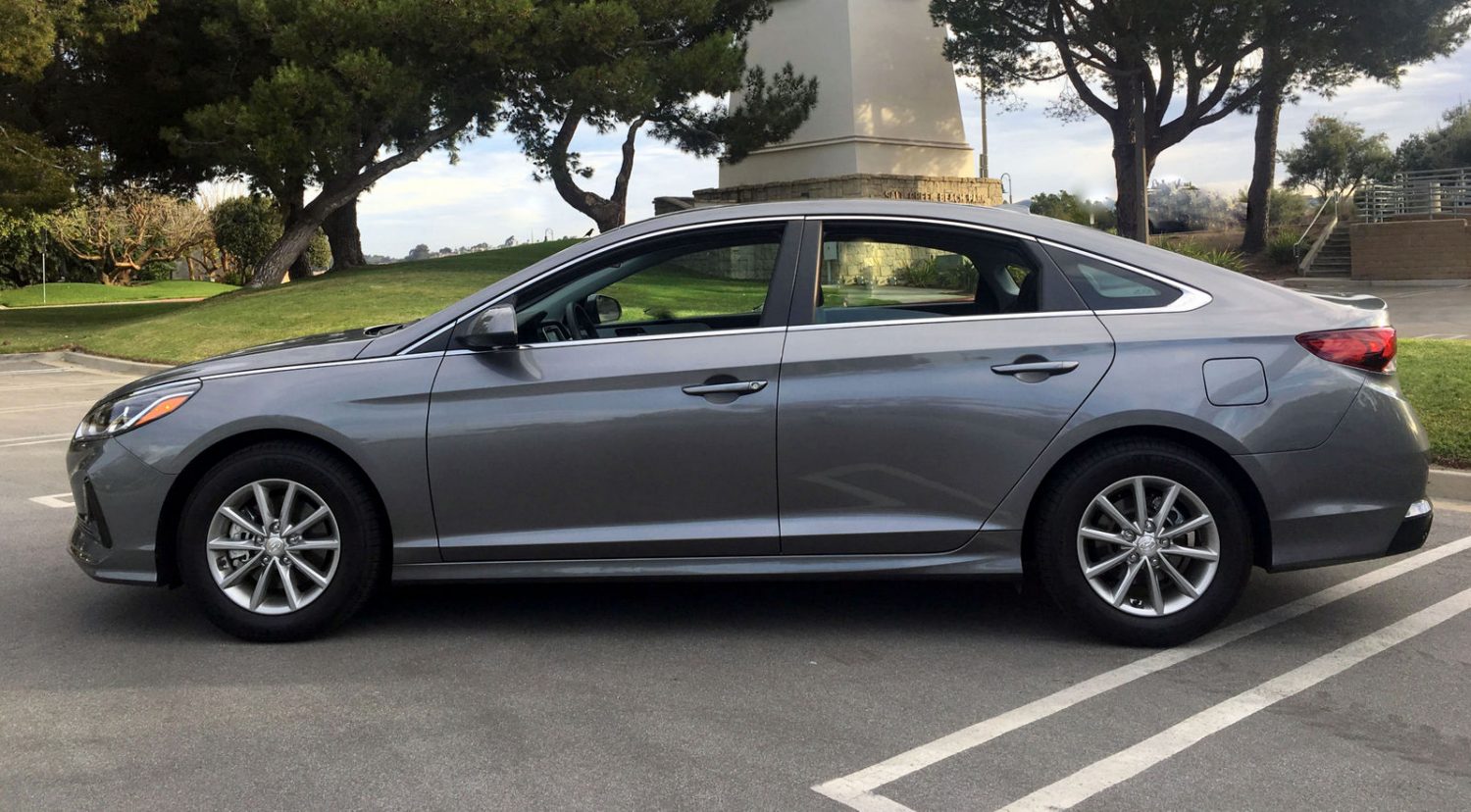
EPA fuel economy estimates are 28 city/37 highway/31 combined miles per gallon. In 357 miles of freeway and city driving, we averaged 33.3 mpg, but on a 200-mile open freeway run, using cruise control set to 65 mph, we averaged an impressive 34.6 mpg. This shows that Hyundai had it about right slapping the “eco” badge on this Sonata.
It is important to note that fuel economy reported by Clean Fleet Report is non-scientific and represents the reviewer’s driving experience. If you live in cold weather, high in the mountains or spend time in the city or stuck in rush hour traffic, then your numbers may differ.
In a few unscientific acceleration runs, the Sonata Eco traveled zero–to 60 in about 8.67 seconds. The time did not vary much leaving the car in automatic or opting for Shiftronic, where you can manually select gears by pushing forward to upshift and backward to downshift. During lane passes at highway speeds and climbing hills, the seven-speed automatic shifted up-and-down seamlessly and precisely.
Driving Experience: On the Road
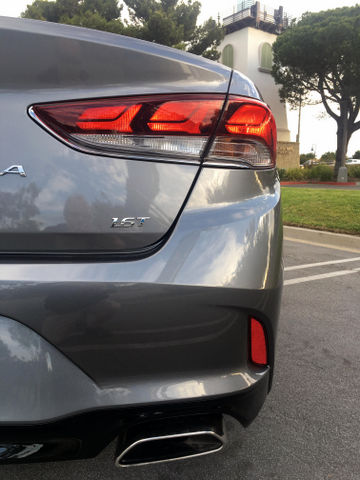
Weighing in at 3,247 lbs., the 2018 Hyundai Sonata Eco performed well in all driving situations, which isn’t always the case when a car is shod with 16-inch tires. The suspension was stiff enough to produce good handling while not sacrificing ride comfort. Handling was aided by stability and traction control systems, resulting in little body roll until pushed past its limits when cornering. Stopping was consistent from the four-wheel disc, ABS system with brake assist.
Driving Experience: Exterior
Redesigned for 2018, Hyundai says the Sonata is “all about making an impact…and to deliver an exciting expressive car.” Coming from Hyundai’s California Design Studio, the Sonata, aiming for an “American aesthetic,” features a clean design that will hold-up well over the years. Beginning with what Hyundai calls their front cascading grille, the projector headlights wrap far back onto the fenders. Except for the shark fin antenna set just above the rear solar control glass window, the line from the front fascia to the rear built-in deck spoiler is unobstructed. There are tasteful chrome accents around the tail lights and the logo badge, and on the single chrome exhaust tip.
Driving Experience: Interior
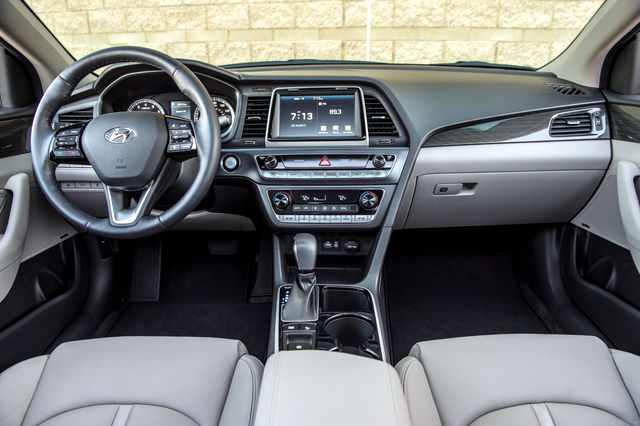
Also redesigned for 2018, the Sonata’s interior is an easy place to spend your time. Easy, as in the high mounted touchscreen is easy to read and the wide-spread radio and climate knobs are easy to reach and control. The Eco model has cloth seats with manual adjustments and comes nicely equipped with tilt and telescoping steering wheel, power windows, A/C and a 60/40 split folding rear seat back.
The steering wheel has controls for the cruise control, audio, Bluetooth streaming and hands-free telephone. The 7.0-inch full-color display is home for the AM/FM with MP3, iPod and USB ports, plus Aux-in jacks.
Rear seat head, shoulder and leg room was ample for six-foot passengers, with two being the optimum number of adults for a road trip of any length.
Pricing, Safety and Warranties
The 2018 Hyundai Sonata comes in seven models with three gasoline-only engines. It also comes as a hybrid or a hybrid plug-in. Base prices range from $19,300 to $33,100. Clean Fleet Report’s Sonata Eco, with the optional carpeted floor mats at $125, had a MSRP of $22,775. All prices do not include the $885 freight and handling charge.
Hyundai has equipped the Sonata Eco with active and passive safety features, including nine air bags, driver’s blind spot detection with rear cross traffic alert and a rear-view camera. Other features are an energy absorbing steering column, automatic headlights, remote keyless entry, tire pressure monitoring system and a theft-deterrent alarm.
The 2018 Hyundai Sonata Eco has an overall 5-Star rating by the National Highway Transportation Safety Association (NHTSA), and a Top Safety Pick by the Insurance Institute for Highway Safety (IIHS), both of which are their highest rankings for safety.
The Eco comes with these warranties:
- Powertrain 10 years/100,000 miles
- New vehicle Five years/60,000 miles
- Roadside Assistance Five years/Unlimited miles
- Anti-Perforation Seven years/Unlimited miles
Observations: 2018 Hyundai Sonata Eco
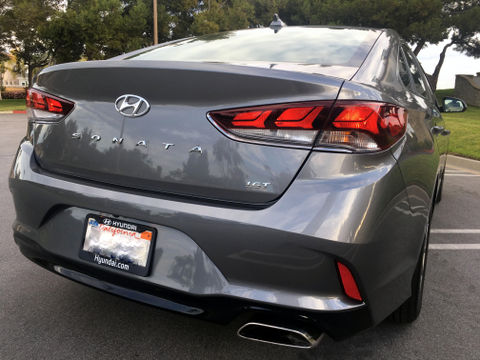
Hyundai has a lot riding on the success of the Sonata. With so many trim levels and engine options, the company is making a statement in the midsize sedan market. Even with the shift to SUVs, it remains one of the biggest segments. The Sonata should be taken seriously; Clean Fleet Report takes the Sonata seriously, and you should too.
Starting with the price point, the Sonata line-up has a compelling story to tell. When you consider the design, interior roominess, standard equipment and fuel economy, the most you will pay for a 2018 Sonata is somewhere around $33,000, and this is only if you opt for the plug-in hybrid. But for the top of the line gasoline-powered Sonata 2.0T Limited, the price is about $29,700. With the average sales price of a car hovering right around $35,000, driving home in a fully optioned midsize sedan for less than the average is saying something.
How a sedan fits your lifestyle will be the key question. If your driving pattern is around town or freeway commuting, and then the occasional vacation, then the Sonata would work just fine. For a family of four, your needs would easily be met.
Whatever you buy, Happy Driving!
Related Stories You Might Enjoy: Midsize Sedan Gas Misers
News: 2018 Hyundai Sonata Hybrids Introduced
Road Test: 2017 Hyundai Sonata Plug-in Hybrid
Road Test: 2016 Hyundai Sonata Hybrid
First Drive: 2018 Toyota Camry Hybrid
Road Test: 2017 Toyota Camry Hybrid
Road Test: 2017 Honda Accord Hybrid
News: 2019 Ford Fusion Energi Gains EV Range & Safety Tech
Road Test: 2017 Ford Fusion Sport
Flash Drive: 2017 Ford Fusion Energi
First Drive: 2016 Nissan Altima
News: 2017 Mazda 3 & Mazda6 World Debut
Road Test: 2017 Kia Optima Plug-in Hybrid
Comparison Test: 2017 Kia Optima Hybrid & Plug-in Hybrid
Road Test: 2017 Kia Optima Hybrid
Disclosure:
Clean Fleet Report is loaned free test vehicles from automakers to evaluate, typically for a week at a time. Our road tests are based on this one-week drive of a new vehicle. Because of this we don’t address issues such as long-term reliability or total cost of ownership. In addition, we are often invited to manufacturer events highlighting new vehicles or technology. As part of these events we may be offered free transportation, lodging or meals. We do our best to present our unvarnished evaluations of vehicles and news irrespective of these inducements.
Our focus is on vehicles that offer the best fuel economy in their class, which leads us to emphasize electric cars, plug-in hybrids, hybrids and diesels. We also feature those efficient gas-powered vehicles that are among the top mpg vehicles in their class. In addition, we aim to offer reviews and news on advanced technology and the alternative fuel vehicle market. We welcome any feedback from vehicle owners and are dedicated to providing a forum for alternative viewpoints. Please let us know your views at publisher@cleanfleetreport.com.



